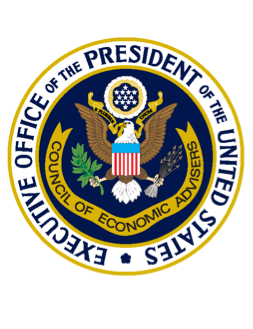Unleashing the Potential of Educational Technology
Executive Office of the President
Council of Economic Advisers

UNLEASHING THE POTENTIAL OF EDUCATIONAL TECHNOLOGY
September 16, 2011
Unleashing the Potential of Educational Technology
Executive Summary
Educational technology holds the promise of substantially improving outcomes for K-12 students, but there are significant challenges in bringing new educational technology products for this population to market. It is difficult for producers of these technologies to demonstrate the effectiveness of their products to potential buyers and market fragmentation creates barriers to entry by all but the largest suppliers. The spread of broadband Internet and Common Core State Standards have improved the landscape for educational technologies, but these factors alone are likely insufficient for a “game changing” advance. Working together, stakeholders can form a plan of action to provide local school systems with easy access to good information about the effectiveness of various educational technology products and give prospective developers of these products access to customers on a scale sufficient to make it worthwhile for them to enter the market. The payoff – in the form of more effective and more widely utilized educational technologies, leading to better outcomes for students – could be enormous.
I. Introduction
A well-trained workforce is essential to economic growth and competitiveness, and the skills of the entire workforce depend critically on the educational foundation established during the K-12 school years. Many observers are concerned, however, about declines in the relative quality of U.S. primary and secondary education, and improving the performance of our schools has become a national priority. Well-designed instructional software holds the promise of personalized learning, adapting to the needs of individual students and evolving as the student progresses, that can contribute to improvements in student outcomes. This background paper briefly describes the market for educational technology, with a focus on instructional software for the K-12 marketplace, and identifies core obstacles to innovation and growth in this potentially transformative sector.
II. The Market for K-12 Educational Technology
Significant resources are devoted to primary and secondary education, both in the United States and abroad. As shown in Table 1, total annual U.S. education expenditure has been estimated at approximately $1.3 trillion, with K-12 education accounting for close to half ($625 billion) of this spending. Global spending is roughly triple U.S. spending for education generally and K-12 education specifically.
While it as yet represents only a small share of total education spending, there is an emerging market for eLearning, which can be defined broadly as the use of electronic technology to facilitate learning, including computer-assisted learning and network-enabled technologies (Bromham and Oprandi 2006). Interestingly, the share of spending devoted to eLearning appears considerably smaller in K-12 education than in post-secondary education. Expenditure on eLearning in U.S K-12 education is estimated to absorb just 46 cents on every $100 spent. By contrast, expenditure on eLearning in U.S. post-secondary education is estimated at $5.60 per $100 spent, or over 10 times the K-12 share.
Table 1: U.S. and Global Education Spending
|
|
|
Market Size ($ billion) |
eLearning Expenditure ($ billion) |
eLearning as % of Market Size |
|
U.S. |
Total |
1,332 |
59.8 |
4.5% |
|
|
Post-secondary |
432 |
24.4 |
5.6% |
|
|
K-12 |
625 |
2.9 |
0.5% |
|
Global |
Total |
3,925 |
62.5 |
1.6% |
|
|
Post-secondary |
1,311 |
31.3 |
2.4% |
|
|
K-12 |
1,878 |
9.4 |
0.5% |
|
Note: Total expenditures also include corporate training, child care and other education. Source: "NeXt Knowledge Factbook 2010", Next Up! Research. |
||||
An important feature of the market for K-12 educational technology products is the large number of institutional purchasers, each with its own distinct curriculum and procurement process. The school district is the relevant decision unit for most institutional purchases. Selling an educational product to a school district may require substantial contact with a diverse set of actors, including state and local procurement officers who oversee funding streams, academic consultants who advise districts, key school board members, and principals and teachers in individual schools. Moreover, decisions about purchases often involve an extended timeline.[1]
In 2007-2008, according to the National Center for Educational Statistics, there were 98,916 public K-12 schools organized into 13,754 different school districts, as well as an additional 33,740 private K-12 schools. Most school districts are small, but the largest public school districts have sizeable numbers of students and correspondingly sizeable budgets. For example, as shown in Table 2, the largest 5 districts in the country collectively serve 2.7 million students and have budgets that total $35.8 billion. While elementary and secondary education is primarily a state and local government function, the federal government plays an important role in education for military dependents, with the Department of Defense Education Activity (DoDEA) serving 85,000 K-12 students.
Table 2: Five Largest U.S. School Districts
|
FY 2008 Top School Districts |
Students |
Expenditures ($) |
Expenditures per Student ($) |
|
|
New York City, NY |
989,941 |
17,742,868 |
17,923 |
|
|
Los Angeles Unified, CA |
693,680 |
7,878,168 |
11,357 |
|
|
Chicago, IL |
407,510 |
4,235,025 |
10,392 |
|
|
Miami-Dade County, FL |
348,128 |
3,457,902 |
9,933 |
|
|
Clark County, NV |
309,051 |
2,486,063 |
8,044 |
|
|
Total Top 5 |
2,748,310 |
35,800,026 |
-- |
|
|
Source: National Center for Education Statistics |
||||
Reflecting the high costs of marketing educational products, the textbook industry has consolidated around three large companies – Pearson, McGraw Hill, and Houghton-Mifflin – that have captured 85% of the textbook market, selling under various brand names (often acquired companies) through consolidated marketing operations. A larger set of smaller players fill subject-specific or region-specific niches.[2] The Big Three also have become active in educational technology, leveraging their existing marketing platforms to sell products in this new category.
Academic studies of educational technology in K-12 education contain important lessons concerning the potential of these products to improve educational outcomes. Using randomized controlled trials, Barrow et al. (2008) have shown that a popular algebra program raises test scores significantly. At the same time, even widely adopted programs may not be effective: Rouse and Krueger (2004), for example, conclude that a popular reading program has no demonstrable effect. Traditional evaluations of educational technology products are both time-consuming and expensive, and many educational technologies have received no external assessment. Further, context and fidelity of implementation can matter considerably for the effectiveness of educational technologies (Wenglinsky 1998; Blok et al. 2002; Boster et al. 2004; Linden 2008).
Despite the potential offered by educational technologies to improve student learning and the considerable limitations in our existing knowledge about how to design and deploy these tools, research and development spending in education has been modest. According to a recent estimate, R&D expenditures in K-12 education account for only 0.2% of spending.[3] There is also relatively little venture capital available for the development of education products. In the last five years, estimates suggest that venture capital has totaled perhaps $200 million annually for education companies, backing an average of 25 new businesses per year. This venture capital investment compares to $4.4 billion for biotechnology, $3.0 billion for medical devices, and $4.8 billion for software.[4] The concentration of the market for K-12 educational technologies contrasts with the large number of companies producing content innovations in other market segments. After just three years, independent analysts estimate that there are over 100,000 software developers producing content innovations for smart phones and tablets[5].
III. Core Challenges: Procurement Barriers and Proof of Effectiveness
This brief overview suggests two core challenges to the effective development and deployment of educational technologies for K-12 education: (1) the procurement challenge, arising from the fragmentation of the market and idiosyncrasies of individual school districts’ procurement methods that make the market hard to penetrate; and (2) the effectiveness challenge, arising from the lack of credible evaluations of most educational technology products. In practice, these two factors can be expected to have reduced the incentives of entrepreneurs and innovators to develop products for this market.
High Barriers to Entry
As already noted, school systems typically feature diverse curricula, idiosyncratic procurement methods, and slow purchasing cycles, making it costly to market new products. The high cost and slow speed of making each individual sale inhibits entry, as businesses and financiers see little opportunity to achieve scale. These barriers limit the sources and variety of new ideas.
The ideal procurement system would feature (a) scale, (b) easy access to decision makers, and (c) a culture that emphasizes efficacy.
Lack of Evidence on Effectiveness
It is often not obvious to the buyer whether a given technology will perform as advertised and verifying a seller’s claims about a technology’s benefit may be impractical. Even if a seller pays for rigorous third-party evaluation, the buyer may struggle to assess the study and may not trust third parties that are paid by the seller. Without effective and credible evaluation, the educational sector cannot determine which products are best. Nor can it be expected that the best products will be adopted, dissuading innovation and limiting the extent to which educational technology can in fact improve outcomes. Ineffective evaluation, and hence the lack of credible certification, is a serious roadblock to the development of a robust market for educational technology.
The ideal evaluation and certification system would be (a) rapid, (b) rigorous, (c) widely trusted and transparent, and (d) low cost for buyers and sellers.
IV. Recent Developments
Two recent developments have changed the educational technology landscape in important ways. One of these developments is the spread of Broadband Internet. The Internet is a standardized and widely understood platform, making it possible for sellers to develop scalable products that almost any purchaser could employ without the need to purchase specialized hardware or equipment. The Internet platform also eases distribution, in that software and updates can be rolled out at very low cost. In 2006,NCES reported that 100 percent of schools were connected to the Internet and 97 percent had broadband Internet (NCES 2006). Access in many classrooms is not yet as fast or reliable as would be desirable, but it has gotten better and continues to improve. Looking ahead, wireless devices such as iPhones and Androids are a new, possibly powerful distribution channel for educational technology products. Improvements in our information and communication technology infrastructure thus provide an important opportunity, bringing educational advances better into reach.
A second important development is the Common Core State Standards that now have been adopted by 44 states and the District of Columbia.[6] The widespread acceptance of these standards represents a major step towards resolving disagreements over learning objectives that have been an obstacle to the development of broadly applicable educational technologies. The standards are highly detailed, providing metrics on a large set of specific skills by grade level and field, and are thus a source of clear, actionable guidance for entrepreneurs and businesses in developing learning technologies.
V. The Path Forward
While not a full solution to the challenges that have impeded effective development and deployment of educational technologies, these recent developments have created an environment that is considerably more hospitable to innovations. Federal, state and local policymakers, along with other education stakeholders, foundations, and private sector firms, can act to take advantage of this opportunity.
Rather than relying on the producers of educational technologies to provide evidence about their effectiveness, schools could be encouraged to join together to facilitate testing of promising technologies and share the resulting assessments. To the extent that technologies can be distributed via the Internet, the logistical challenges to such an endeavor are greatly reduced. And to the extent that particular technologies are shown to be effective in meeting common educational objectives, schools that are a part of the new assessment community could represent initial demand for these products at an attractive scale.
Working together, stakeholders can form a plan of action to provide local school systems with easy access to good information about the effectiveness of various educational technology products and give prospective developers of these products access to customers on a scale sufficient to make it worthwhile for them to enter the market. The payoff – in the form of more effective and more widely utilized educational technologies, leading to better outcomes for students – could be enormous.
References
App Store Metrics. 148apps.biz. 12 Sept. 2011. http://148apps.biz/app-store-metrics/
Barrow, Lisa, Lisa Markman, and Cecilia Rouse. “Technology's Edge: The Educational Benefits of Computer-Aided Instruction.” NBER Working paper No. 14240, August 2008.
Berger, Larry and David Stevenson. “K-12 Entrepreneurship: Slow Entry, Distant Exit.” American Enterprise Institute Conference on the Future of Educational Entrepreneurship. October 2007.
Blok, H., R. Oostda, M. E. Otter, and M. Overmaat. “Computer-Assisted Instruction in Support of Beginning Reading Instruction: A Review.” Review of Educational Research,Vol.72, No. 1, Spring 2002, pages 101-130.
Boster, Franklin J., Gary S. Meyer, Anthony J. Roberto, Lisa Lindsey, Rachel Smith, Renee Strom, and Carol C. Inge. “A Report on the Effect of the Unitedstreaming(TM) Application on Educational Performance: The 2004 Los Angeles Unified School District mathematics evaluation.” Cometrika, Inc., Baseline Research, LLC, & Longwood University. September 2004
Bromham, Lindell and Paolo Oprandi. “Evolution Online: Using a Virtual Learning Environment to Develop Active Learning in Undergraduates.” Journal of Biological Education, Vol. 41, No. 1, Winter 2006, pages 21-25.
“Internet Access in U.S. Public Schools and Classrooms: 1994-2005.” National Center for Education Statistics, November 2006.
Leigh Linden. “Complement or Substitute? The Effect of Technology on Student Achievement in India.” World Bank infoDev Working paper No. 17, 2008.
Mendell, Emily. “NVCA Spotlight on Education” Online posting. 15 November 2010. nvcaccess Commentary. 12 Sept. 2011 http://nvcaccess.nvca.org/index.php/topics/commentary.html?start=14.
"NeXt Knowledge Factbook 2010." Next Up! Research, 12 Sept. 2011 http://www.nextupresearch.com/Site/GSV_Media_files/Next%20Knowledge%20Factbook%20v4.pdf.
Rouse, Cecilia E. and Alan B. Krueger. “Putting Computerized Instruction to the Test: a Randomized Evaluation of a ‘Scientifically Based’ Reading Program.” Economics of Education Review, Vol. 23, No. 4, August 2004, pages 323-338.
Snyder, Thomas D. and Sally A. Dillow. “Digest of Education Statistics 2009.” National Center for Education Statistics, April 2010.
V C Investment (Money Tree). 2004-2011. National Venture Capital Association. 12 Sept. 2011. http://www.nvca.org/index.php?option=com_docman&task=cat_view&gid=57&Itemid=317.
Wenglinsky, Harold. “Does it Compute? The Relationship Between Educational Technology and
Student Achievement in Mathematics.” Educational Testing Service Policy Information Center, 1998.
[1]Berger and Stevenson (2007) report that the cycle time for making a sale to a district averages 8 months and for expanding across a district, 18 months.
[2]Berger and Stevenson (2007 ) report three additional companies, including Scholastic, with annual revenues in the high 100s of millionsof dollars, approximately a dozen companies in the $100-250millionrange, a small group in the $25-100millionrange, and then many smaller companies below the $5millionthreshold.
[3]The 0.2% estimate comes from the President’s Council of Advisors on Science and Technology report, “Prepare and Inspire: K-12 Science, Technology, Engineering, and Math (STEM) Education for America’s Future” (2010). This figure is somewhat higher than other estimates.
[4]Market participants suggest numbers in the $50-250millionrange for venture backing in educational technology; the reported estimates comes from a National Venture Capital Association’s Spotlight on Education study. Estimates for other industries come from the Price Waterhouse Coopers National Venture Capital Association MoneyTree Report (2011).
[5]148apps.biz, an iOS development news and information site that develops App Store Metrics, counted 105,489 active publishers in the US App Store in September 2011 and 463,272 active apps.
[6]See http://www.corestandards.org/in-the-states for a list of states that have adopted common core standards


